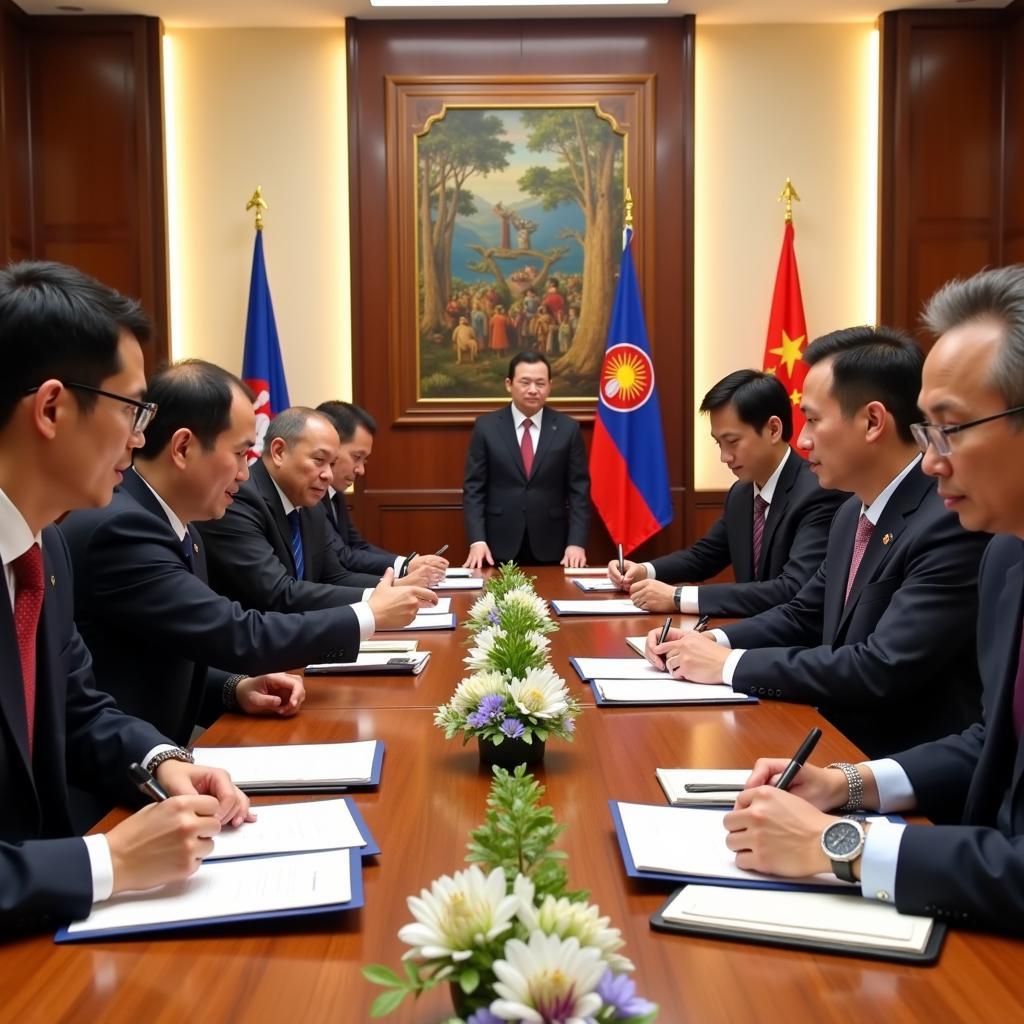The year 2015 marked a significant milestone for the Association of Southeast Asian Nations (ASEAN) as it embarked on a journey towards deeper regional integration with the establishment of the ASEAN Economic Community (AEC). The goal of ASEAN 2015 integration, often encapsulated by the phrase “One Vision, One Identity, One Community,” was to transform Southeast Asia into a competitive, innovative, and inclusive region.
This ambitious endeavor aimed to enhance ASEAN’s global standing while fostering sustainable development and improving the lives of its citizens. While the ASEAN 2015 integration was a pivotal step, the journey towards regional integration is an ongoing process with continuous efforts to deepen cooperation and address emerging challenges.
The Pillars of ASEAN 2015 Integration
The ASEAN 2015 integration agenda was structured around four key pillars, each representing a crucial aspect of regional cooperation:
1. Single Market and Production Base
This pillar envisioned ASEAN as a single market and production base characterized by the free flow of goods, services, investment, and skilled labor. By eliminating barriers to trade and promoting a more conducive business environment, the goal was to enhance ASEAN’s competitiveness and attract foreign direct investment.
2. Competitive Economic Region
Recognizing the importance of innovation and productivity in the global economy, this pillar aimed to foster a more competitive ASEAN. This included initiatives to promote research and development, support small and medium-sized enterprises (SMEs), and develop a skilled and adaptable workforce.
3. Equitable Economic Development
ASEAN 2015 integration recognized the need to ensure that the benefits of economic growth were shared equitably among all member states and segments of society. This pillar emphasized poverty reduction, narrowing the development gap, and promoting inclusive growth.
4. ASEAN’s Integration into the Global Economy
This pillar underscored ASEAN’s commitment to multilateralism and its intention to play an active role in shaping the global economic landscape. It involved strengthening ASEAN’s economic partnerships with other countries and regions, as well as actively participating in international forums and negotiations.
The Rationale Behind ASEAN 2015 Integration
The decision to pursue deeper integration in 2015 was driven by several key factors:
-
Economic Growth and Competitiveness: By creating a single market and production base, ASEAN aimed to boost economic growth, attract foreign investment, and enhance its competitiveness on the global stage.
-
Political Stability and Security: Deeper integration was seen as a way to strengthen ties between member states, foster a shared sense of purpose, and promote peace and stability in the region.
-
Regional Resilience: By working together, ASEAN countries could enhance their collective resilience to economic shocks, natural disasters, and other challenges.
The Impact of ASEAN 2015 Integration
While the ASEAN 2015 integration agenda has faced challenges and its full potential is still being realized, it has undoubtedly yielded significant progress:
-
Economic Growth: ASEAN has emerged as one of the fastest-growing regions in the world, attracting substantial foreign investment and witnessing a surge in intra-ASEAN trade.
-
Improved Connectivity: Significant progress has been made in enhancing physical, institutional, and people-to-people connectivity within the region, facilitating the movement of goods, services, and people.
-
Enhanced Regional Cooperation: The integration process has fostered greater cooperation among ASEAN member states in various areas, including trade, investment, security, and socio-cultural exchanges.
The Future of ASEAN Integration
ASEAN integration is an ongoing journey, and the organization continues to build upon the foundation laid by the 2015 agenda. Current priorities include:
-
Deepening Economic Integration: ASEAN is working towards further reducing trade barriers, harmonizing regulations, and promoting greater economic integration.
-
Digital Transformation: Recognizing the transformative potential of technology, ASEAN is prioritizing digital innovation, e-commerce, and the development of a digital single market.
-
Sustainable Development: ASEAN is committed to achieving sustainable development goals and addressing critical issues such as climate change, environmental degradation, and social inequality.
Conclusion
The ASEAN 2015 integration was a pivotal step in the region’s journey towards greater cooperation and prosperity. While challenges remain, ASEAN’s commitment to regional integration has yielded significant progress, transforming Southeast Asia into a dynamic and influential force on the global stage. As ASEAN continues to navigate a rapidly evolving world, deeper integration remains crucial for ensuring the region’s continued growth, stability, and resilience.
FAQ
1. What were the main goals of ASEAN 2015 integration?
The main goals were to establish a single market and production base, foster a competitive economic region, promote equitable economic development, and integrate ASEAN into the global economy.
2. How did ASEAN 2015 integration impact the region’s economy?
It led to increased economic growth, attracted foreign investment, and boosted intra-ASEAN trade.
3. What are some of the challenges facing ASEAN integration?
Challenges include narrowing the development gap between member states, addressing non-tariff barriers to trade, and managing geopolitical complexities.
4. What is the future direction of ASEAN integration?
ASEAN is focused on deepening economic integration, embracing digital transformation, and promoting sustainable development.
5. Where can I find more information about ASEAN?
You can visit the official website of the ASEAN Secretariat.
Need assistance?
Contact us:
Phone Number: 0369020373
Email: [email protected]
Address: Ngoc Lien Village, Hiep Hoa, Bac Giang, Vietnam
Our customer support team is available 24/7 to assist you.


